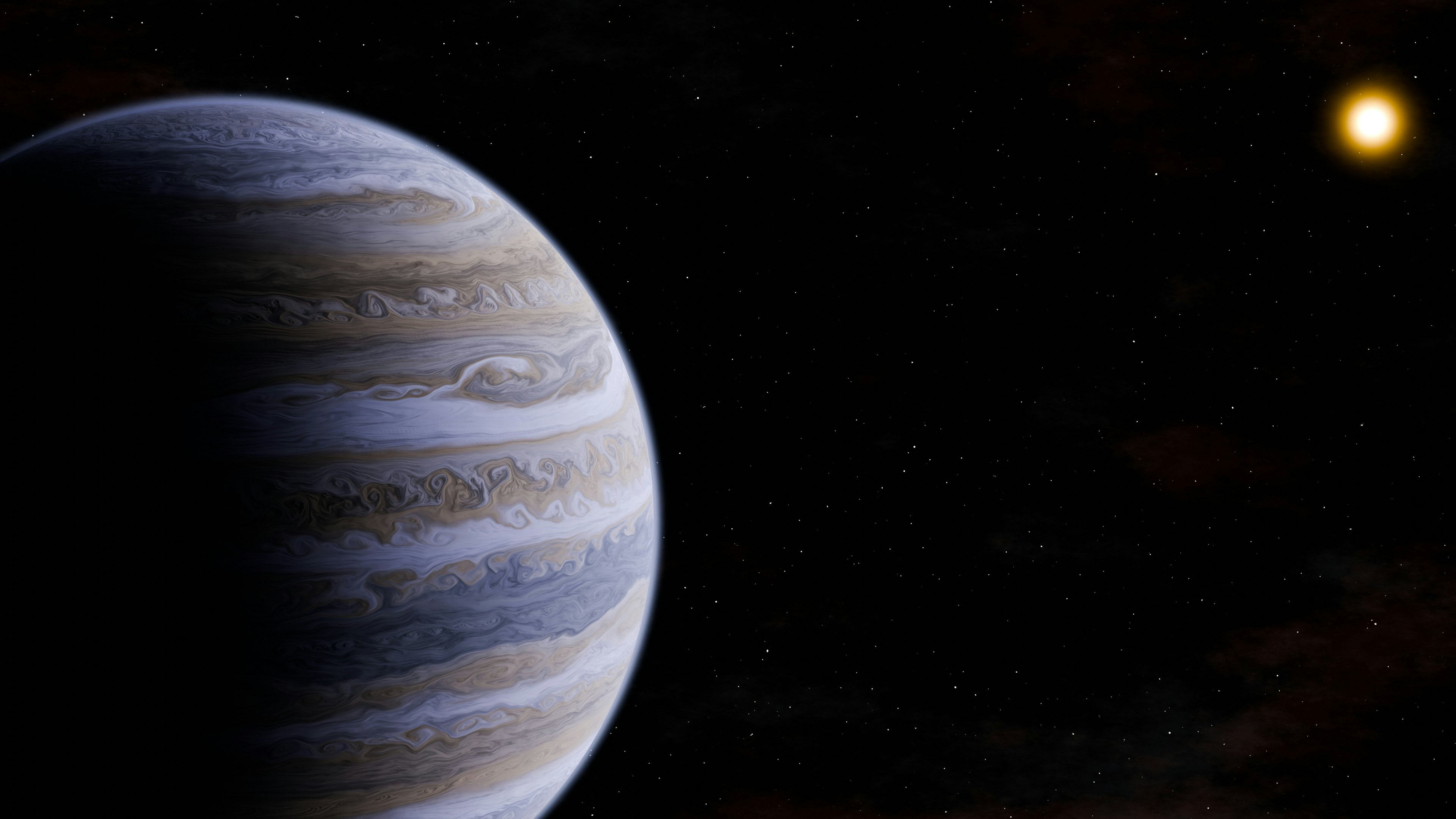
Episolon Indi is a trio of stars, which is a complicated situation already — but two of them aren’t even real stars; they’re brown dwarfs, objects just a smidgeon too small to be stars, but several smidgeons too big to be planets. And now the system boasts an enormous gas giant in its outskirts, where astronomers didn’t expect it to be.
A team of astronomers recently used the James Webb Space Telescope (JWST)’s MIRI instrument to capture images of a gas giant orbiting a nearby star. Earlier studies had predicted that the star should have a giant planet, but no one expected the planet astronomer Elisabeth Matthews and her colleagues actually found in JWST’s data: a gargantuan beast of a world, six times the mass of Jupiter and orbiting three times farther from its star than Jupiter does from the Sun.
Matthews (of the Max Planck Institute for Astronomy) and her colleagues published their findings in the journal Nature.

A Giant Surprise
Matthews and her colleagues pointed JWST’s Mid-Infrared Instrument, or MIRI, at the nearby star system Epsilon Indi, which is home to one small orange star, just a little smaller and cooler than our Sun, and a pair of brown dwarfs (objects much too large to be planets, but not quite massive enough to be stars). Other astronomers had previously noticed that Epsilon Indi A, the orange star, had a slight wobble, as if it were being pushed and pulled by the gravity of a giant gas planet in its orbit. But no one had ever actually seen that planet, and the researchers thought JWST would be up to the challenge.
They found the planet, but it wasn’t where all the previous data said it should have been. Instead, it was about four times farther from the star, and about twice as massive, as the researchers had expected. That’s pretty cool, both literally — its about 35 degrees Fahrenheit — but also figuratively, as it is a rare chance to study gas giants in the outer reaches of their star systems.
“To our surprise, the bright spot that appeared in our MIRI images did not match the position we were expecting for the planet,” says Matthews in a recent statement. They’d been looking for a planet about three times the mass of Jupiter, which orbited its star about once every 45 or 50 years. Instead, the bright point of light in MIRI’s images turned out to be a planet about six times more massive than Jupiter, and it’s so far away from its star that it takes around 200 years to finish a single orbit.
For comparison, Jupiter is about five times farther from the Sun than Earth is (that’s five astronomical units, or AU); at that distance, Jupiter takes about 12 years to make a full orbit. Epsilon Eridani Ab, as the new planet is called, is about 15 times farther from its star than Earth is from the Sun, and its orbit is a stretched-out oval, so its actual farthest point from its star is at least 20 AU away.
The earlier studies had drastically underestimated how huge, and how far out, Epsilon Eridani Ab actually was. That’s mostly because those astronomers discovered the planet using what’s called the radial velocity method, which measures how much a star wobbles back and forth as the planet, which exerts a small but noticeable gravitational tug on the star, moves around in its orbit. But astronomers were able to watch those stellar wobbles for just a tiny fraction of the planet’s actual orbit, so it was almost impossible for them to accurately reconstruct the whole thing.
That left Matthews and her colleagues with a huge surprise.
A Little-Known Type of Planet
Giant gas planets like Jupiter and Epsilon Indi Ab form in the outer reaches of their star systems, where there’s less radiation from the newborn star to blow away the gas that forms these giants. Over time, some of them migrate inward: In our own Solar System, Jupiter did some wandering in its younger days, and in many alien star systems, astronomers have discovered a type of planet called a “hot Jupiter,” a gas giant that’s migrated inward until it’s zipping around its host star once every few days.
Hot Jupiters may be the category of planet we know the most about, even though only about 1 percent of stars actually have a hot Jupiter in their collection of planets. That’s because hot Jupiters are relatively easy to spot: they’re big and close to their stars, so it’s easy to track their radial velocity effects or spot their silhouettes when they pass between their star and Earth.
More distant worlds, even huge gas giants like Epsilon Indi Ab, are harder to find, because their orbits are so long (see above) and because they’re less likely to pass in front of their stars from our point of view, thanks to the angles involved. So the gas giants that don’t end up falling inward into scorching hot orbits are sort of a gap in our knowledge of the universe — and Epsilon Indi Ab is a chance to fill in that blank spot on the cosmic map.
“In the long run, we hope to also observe other nearby planetary systems to hunt for cold gas giants that may have escaped detection,” says the Max Planck Institute for Astronomy’s Thomas Henning, a coauthor of the recent paper, in a statement. “Such a survey would serve as the basis for a better understanding of how gas planets form and evolve.”
Meanwhile, Matthews and her colleagues also hope to get more detailed measurements of the spectrum of light coming from the planet, which could tell them what its atmosphere is made of and whether it’s cloudy, hazy, or clear.







